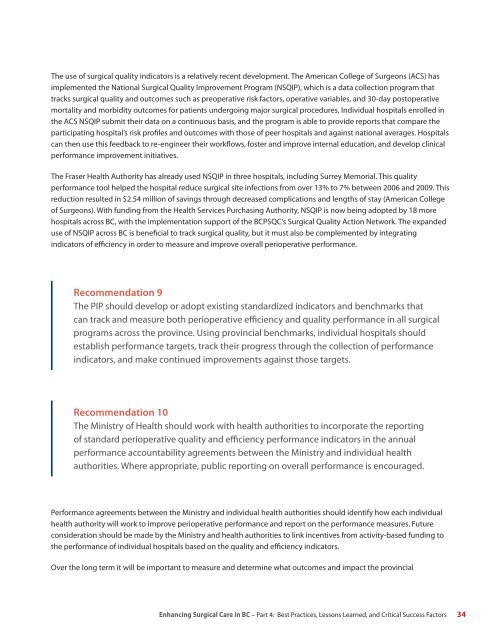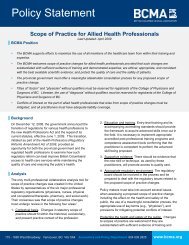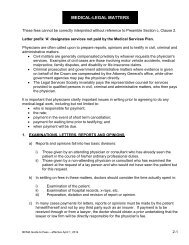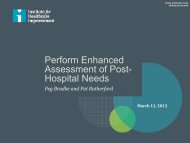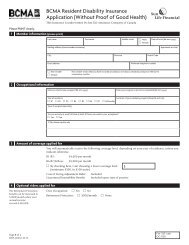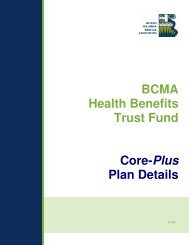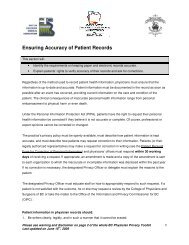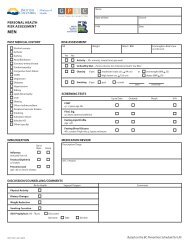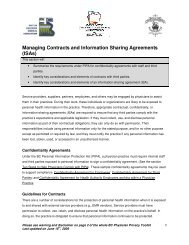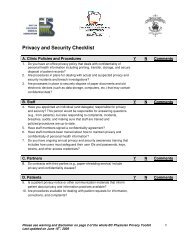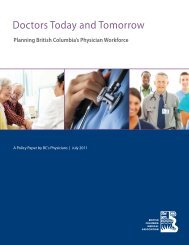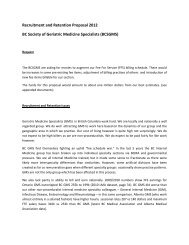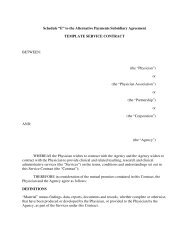Enhancing Surgical Care in BC - British Columbia Medical Association
Enhancing Surgical Care in BC - British Columbia Medical Association
Enhancing Surgical Care in BC - British Columbia Medical Association
You also want an ePaper? Increase the reach of your titles
YUMPU automatically turns print PDFs into web optimized ePapers that Google loves.
The use of surgical quality <strong>in</strong>dicators is a relatively recent development. The American College of Surgeons (ACS) has<br />
implemented the National <strong>Surgical</strong> Quality Improvement Program (NSQIP), which is a data collection program that<br />
tracks surgical quality and outcomes such as preoperative risk factors, operative variables, and 30-day postoperative<br />
mortality and morbidity outcomes for patients undergo<strong>in</strong>g major surgical procedures. Individual hospitals enrolled <strong>in</strong><br />
the ACS NSQIP submit their data on a cont<strong>in</strong>uous basis, and the program is able to provide reports that compare the<br />
participat<strong>in</strong>g hospital’s risk profiles and outcomes with those of peer hospitals and aga<strong>in</strong>st national averages. Hospitals<br />
can then use this feedback to re-eng<strong>in</strong>eer their workflows, foster and improve <strong>in</strong>ternal education, and develop cl<strong>in</strong>ical<br />
performance improvement <strong>in</strong>itiatives.<br />
The Fraser Health Authority has already used NSQIP <strong>in</strong> three hospitals, <strong>in</strong>clud<strong>in</strong>g Surrey Memorial. This quality<br />
performance tool helped the hospital reduce surgical site <strong>in</strong>fections from over 13% to 7% between 2006 and 2009. This<br />
reduction resulted <strong>in</strong> $2.54 million of sav<strong>in</strong>gs through decreased complications and lengths of stay (American College<br />
of Surgeons). With fund<strong>in</strong>g from the Health Services Purchas<strong>in</strong>g Authority, NSQIP is now be<strong>in</strong>g adopted by 18 more<br />
hospitals across <strong>BC</strong>, with the implementation support of the <strong>BC</strong>PSQC’s <strong>Surgical</strong> Quality Action Network. The expanded<br />
use of NSQIP across <strong>BC</strong> is beneficial to track surgical quality, but it must also be complemented by <strong>in</strong>tegrat<strong>in</strong>g<br />
<strong>in</strong>dicators of efficiency <strong>in</strong> order to measure and improve overall perioperative performance.<br />
Recommendation 9<br />
The PIP should develop or adopt exist<strong>in</strong>g standardized <strong>in</strong>dicators and benchmarks that<br />
can track and measure both perioperative efficiency and quality performance <strong>in</strong> all surgical<br />
programs across the prov<strong>in</strong>ce. Us<strong>in</strong>g prov<strong>in</strong>cial benchmarks, <strong>in</strong>dividual hospitals should<br />
establish performance targets, track their progress through the collection of performance<br />
<strong>in</strong>dicators, and make cont<strong>in</strong>ued improvements aga<strong>in</strong>st those targets.<br />
Recommendation 10<br />
The M<strong>in</strong>istry of Health should work with health authorities to <strong>in</strong>corporate the report<strong>in</strong>g<br />
of standard perioperative quality and efficiency performance <strong>in</strong>dicators <strong>in</strong> the annual<br />
performance accountability agreements between the M<strong>in</strong>istry and <strong>in</strong>dividual health<br />
authorities. Where appropriate, public report<strong>in</strong>g on overall performance is encouraged.<br />
Performance agreements between the M<strong>in</strong>istry and <strong>in</strong>dividual health authorities should identify how each <strong>in</strong>dividual<br />
health authority will work to improve perioperative performance and report on the performance measures. Future<br />
consideration should be made by the M<strong>in</strong>istry and health authorities to l<strong>in</strong>k <strong>in</strong>centives from activity-based fund<strong>in</strong>g to<br />
the performance of <strong>in</strong>dividual hospitals based on the quality and efficiency <strong>in</strong>dicators.<br />
Over the long term it will be important to measure and determ<strong>in</strong>e what outcomes and impact the prov<strong>in</strong>cial<br />
<strong>Enhanc<strong>in</strong>g</strong> <strong>Surgical</strong> <strong>Care</strong> <strong>in</strong> <strong>BC</strong> – Part 4: Best Practices, Lessons Learned, and Critical Success Factors 34


